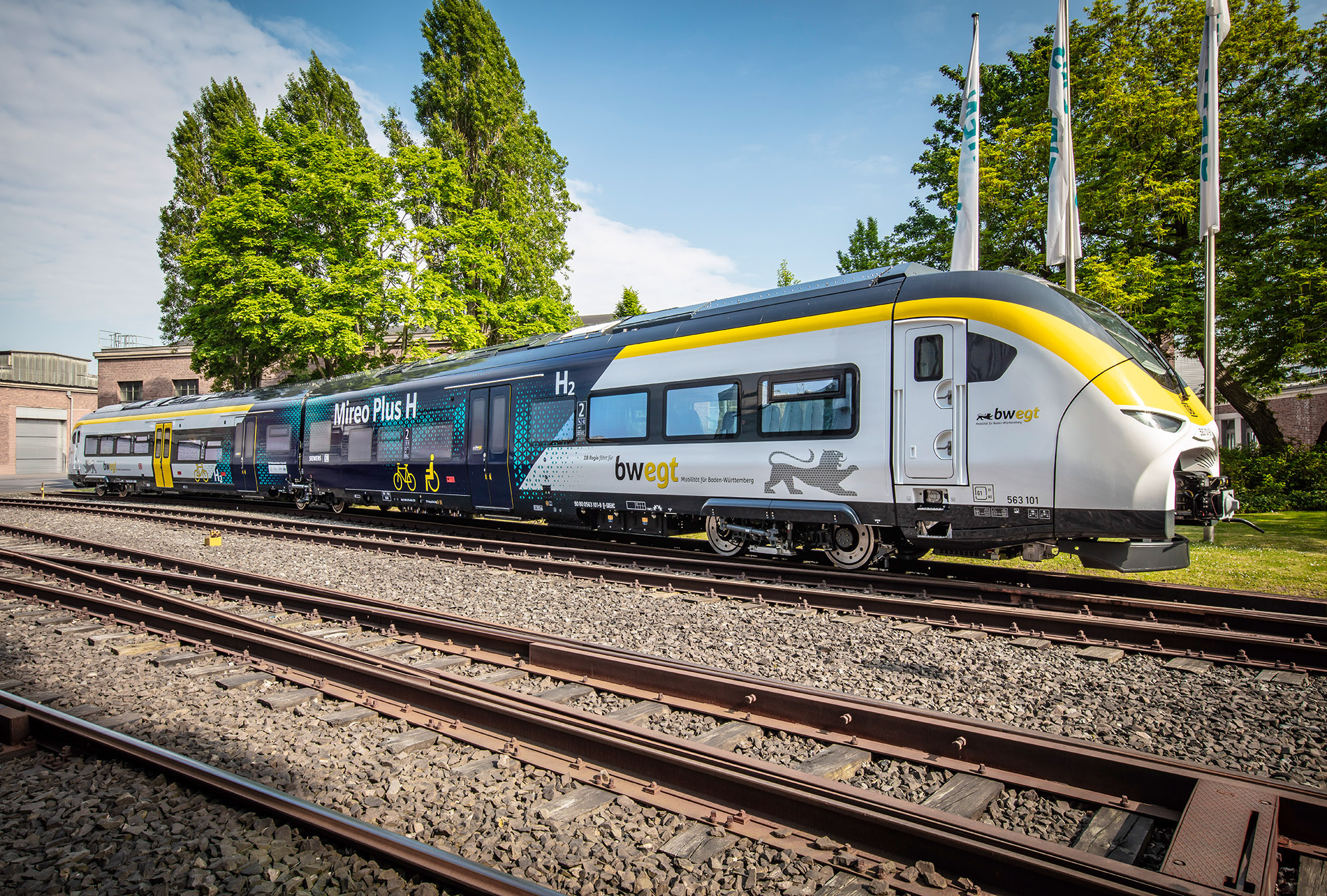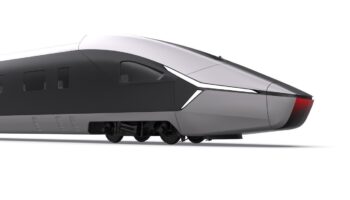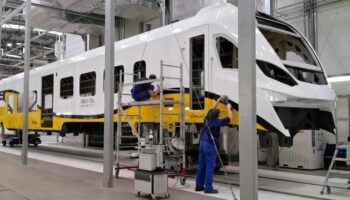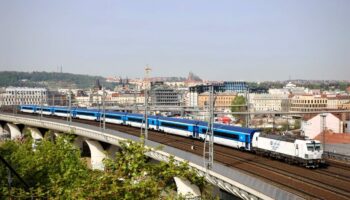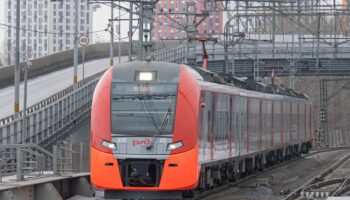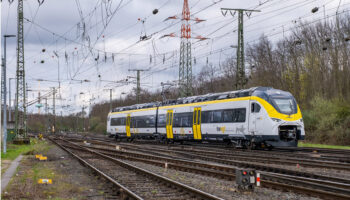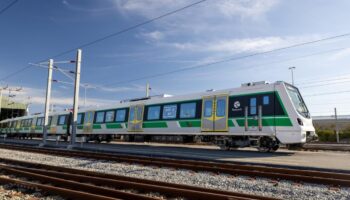Germany: A joint presentation with Deutsche Bahn of a two-car train and a mobile trailer for hydrogen transportation took place at the manufacturer’s plant in Krefeld.
Background and technology
Siemens and Ballard began the development of hydrogen fuel cells for implementation in train traction at the end of 2017. The project called H2goesRail was supported by the German Federal Ministry for Digital and Transport (BMDV), providing a grant of €13.7 mln EUR to develop the technology.
However, it was only at the end of 2020 that Siemens and Deutsche Bahn announced the start of hydrogen train designing. Siemens Mobility has pledged to build hybrid rolling stock based on its new Mireo platform, while Deutsche Bahn has committed to refueling infrastructure and equipping a depot in Ulm to serve such trains.
Hydrogen for the project will be produced by the means of electrolysis at the DB Regio plant in Tübingen. Its delivery to filling stations will be carried out in mobile trailers. It is worth noting that Siemens is also building a green hydrogen plant in Germany with a capacity of 1,350 t per year. The opening of the site in Bavaria is planned this summer.
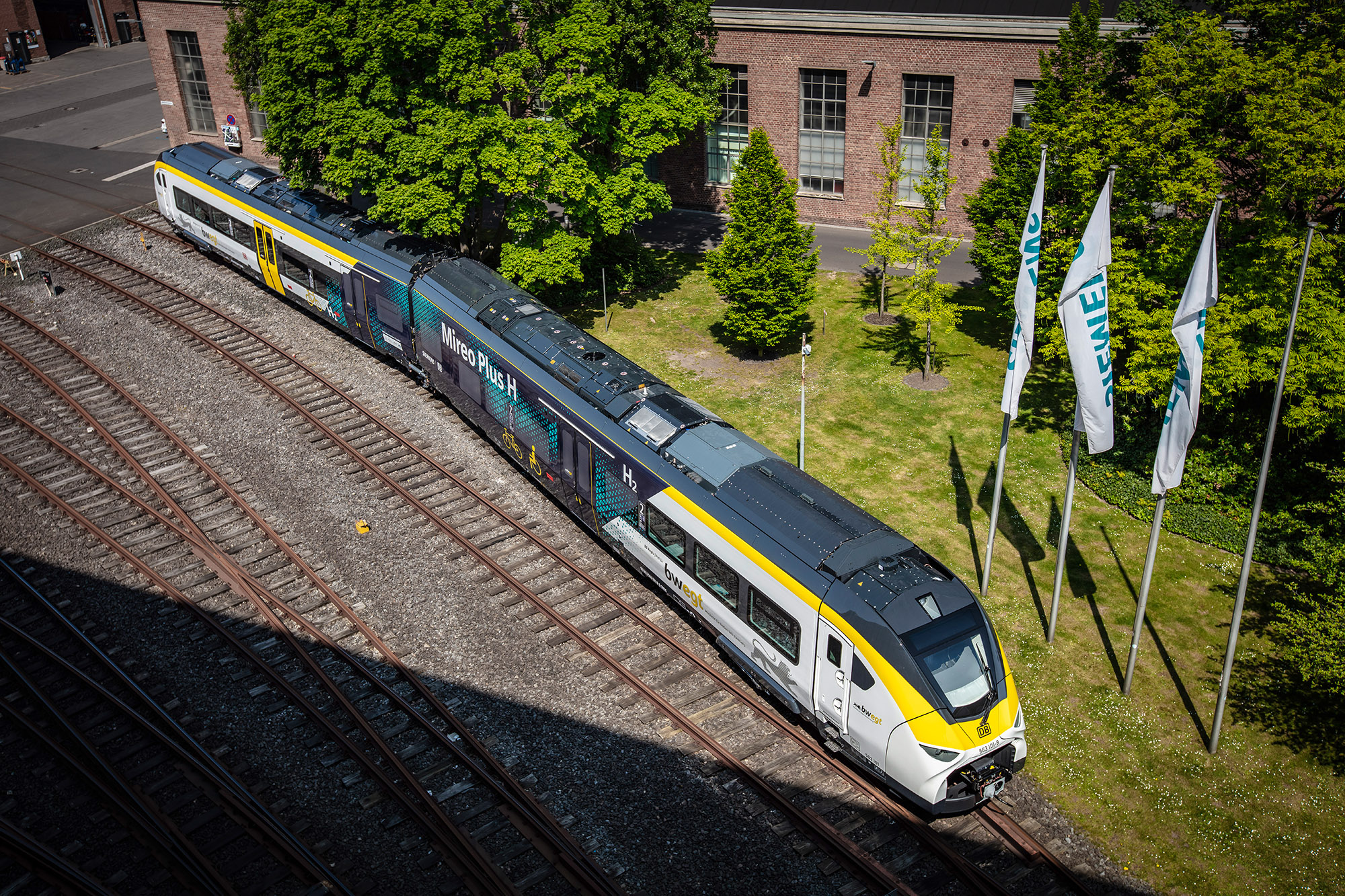 Mireo Plus H hydrogen train at the plant in Krefeld (aerial view). Source: Siemens
Mireo Plus H hydrogen train at the plant in Krefeld (aerial view). Source: Siemens
Mireo Plus H will apply a new generation of power unit: in a fuel cell from Ballard, hydrogen reacts with oxygen, resulting in the formation of water and electricity, which charges Saft’s lithium-ion batteries and maintains the on-board system. In turn, the batteries supply energy to asynchronous generators that drive the wheels, without the help of cardan shafts. Two variants of the train traction are assumed: fuel cells + battery and fuel cells + battery + catenary.
The manufacturer names a number of advantages of such a traction:
-
- Higher efficiency: fuel cells have a doubled specific capacity (total power of the power unit will be 1,700 kW) and increased service life (34,000 hours of operation),
- Increased range: the range will be 800 km for a two-car train and 1,000 km for a three-car vehicle,
- Reduced maintenance costs: up to 45% lower operating costs due to longer fuel cell life and lower repair costs,
- Different ways of charging traction batteries: from a hydrogen fuel cells, catenary and regenerative braking energy,
- Fast refueling: innovative technology makes it possible to refuel a train with hydrogen in just 15 minutes,
- Achieving a maximum speed of 160 km/h with an acceleration of 1.1 m/s2,
- Environmental friendliness: when using this type of traction, no CO2 is emitted. According to Siemens, replacing a diesel train with a Mireo Plus H with a run of 200,000 km results in a reduction in emissions of 520 t of CO2,
- Low noise level: the hydrogen power plant is significantly quieter than internal combustion engines.
 Layout diagram of the Mireo Plus H traction power plant elements. Source: Siemens
Layout diagram of the Mireo Plus H traction power plant elements. Source: Siemens
It is worth noting that two sets of hydrogen fuel cells are mounted on the roof, while the batteries are located under the floor. The developers of Mireo Plus H were faced with the task of creating compact high-power batteries (more than 1 MW) that could be placed in a small compartment under the floor. This was achieved through the use of silicon carbide semiconductors.
Trials and contracts
In the summer of 2021, Siemens Mobility reached an agreement with the regional operator BRB to test the two-car Mireo Plus H on the Augsburg-Füssen line starting from mid-2023. Also in 2024, a test operation of a train with passengers between Tübingen, Horb and Pforzheim is planned. During the year, the train must pass 120,000 km of test run. In a commentary to Reuters, the CEO of Siemens Mobility Michael Peter noted that the target for the supply of Mireo Plus H will be orders for the replacement of diesel trains from local operators, which traditionally place lots for purchases in the amount of 10-50 trains.
In February 2022, Siemens Mobility received the first order for the Mireo Plus H hydrogen trains. The Niederbarnimer Eisenbahn (NEB) operator awarded the producer with a contract for the supply and maintenance of 7 two-car trains with a hybrid power system, including hydrogen fuel cells and batteries, for operation in the suburbs of Berlin. The contract also provides an option for 3 more trains. The rolling stock should be delivered at the end of September 2024, maintenance services will be provided until December 2034.
The Siemens Mireo train platform was developed as a continuation of the Desiro line and includes four train models: the basic Mireo, the “economical” Mireo Smart (low price electric train, lower costs are claimed while maintaining the level of reliability), Mireo Plus B (battery train with a range of 80 km) and Mireo Plus H.
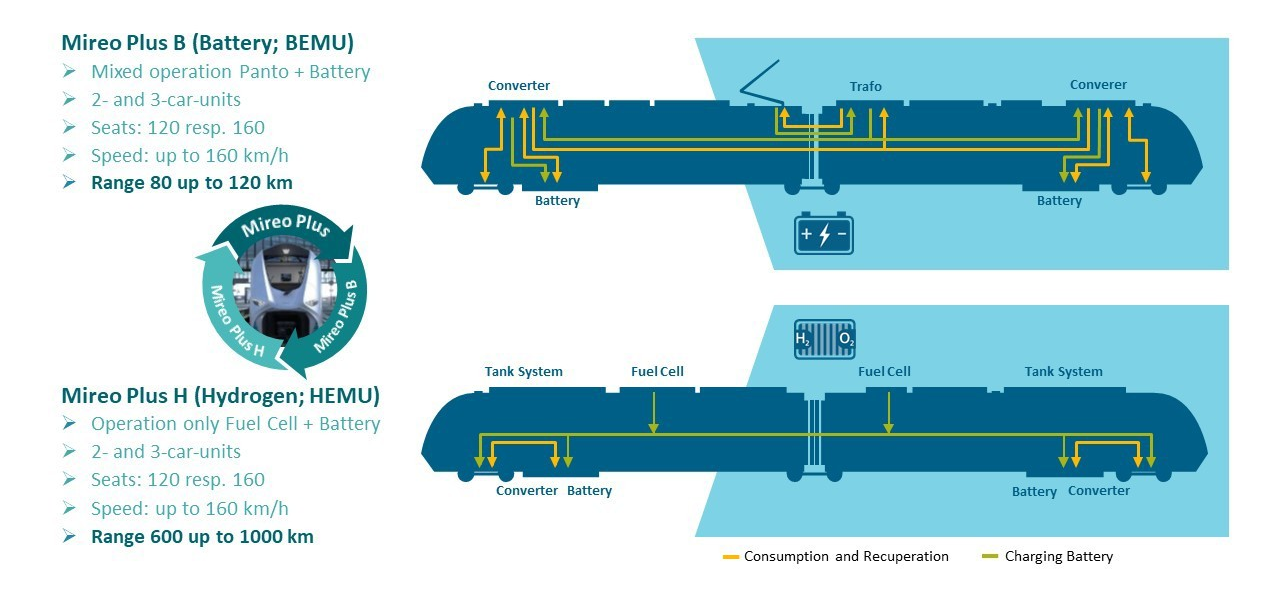 Hydrogen and battery traction solutions based on the Mireo multiple unit platform (enlarge). Source: siemens.com
Hydrogen and battery traction solutions based on the Mireo multiple unit platform (enlarge). Source: siemens.com
Main competitor
Siemens Mobility is the second manufacturer to introduce hydrogen-powered multiple unit rolling stock. Another player, Alstom, has also been working in this direction for several years. The first two Coradia iLint hydrogen fuel cell trains entered service in Germany in September 2018. Currently, the French manufacturer’s portfolio of orders includes a contract for the supply of 40 Coradia iLint trains for various regions of Germany, 14 trains for the Italian carrier FNM, and 12 4-car trains for French regions (with an option for 2 more trains). Successful trials of Coradia iLint have been carried out in Austria, the Netherlands, Poland and Sweden. Also Alstom recently announced the start of work on hydrogen locomotives.



